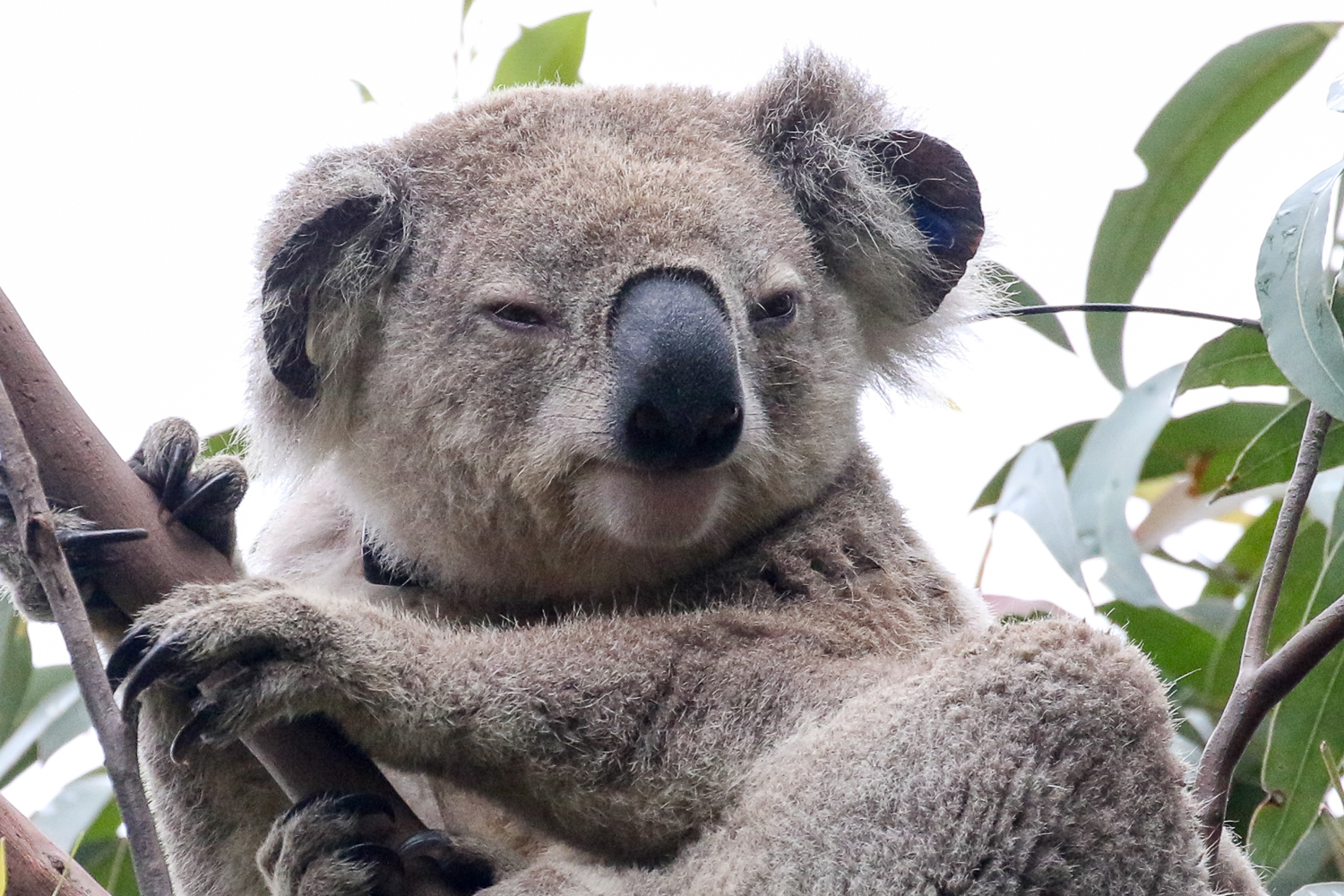
In 2020 and 2021 during the height of Covid two citizen-scientists, Steve Anyon-Smith and Tom Christensen, discovered a large healthy population of koalas in the Heathcote National Park. The Friends of Royal wrote an article at that time and you can find it here. The plight of koalas has remained in the public consciousness in the last few years and while there has been devastating loss of koala habitat across their range, there are some positives for our local population.
Since 2021 there have been more confirmed sightings, and the current population is known to be above 190. This includes koalas of all ages, which is a good indication of the viability of the population.
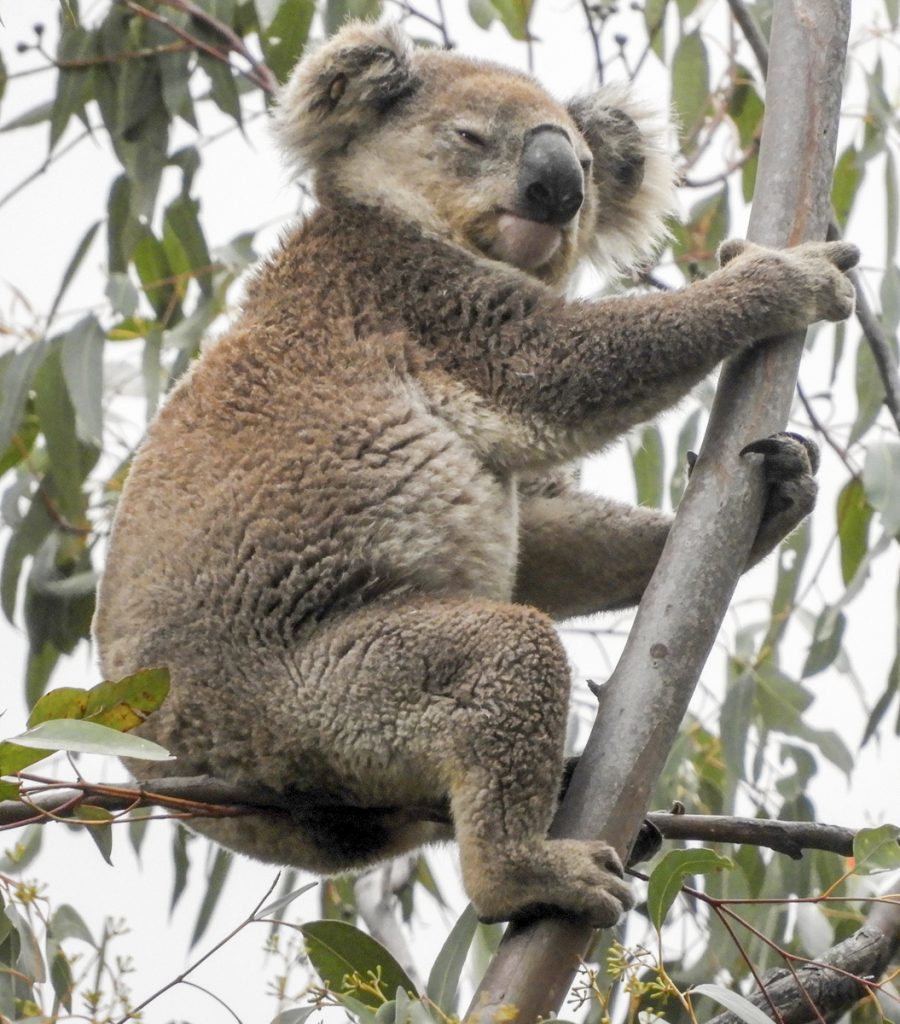
Buck
Several long-term, systemic pressures threaten the existence of koalas sufficiently that since February 2022 koala populations in Queensland, New South Wales and the Australian Capital Territory are classified as Endangered under the Environment Protection and Biodiversity Conservation Act (EPBC Act) 1999. It is widely acknowledged that the destruction of habitat, the risk from bushfires and infection with chlamydia are key threats to their existence. Destruction of habitat from activities including urban development and logging is likely to remain the key risk to their existence. Sadly, the risks from bushfires will also remain, with scientists predicting that the incidence of extreme wildfires will increase due to climate change. Infection with chlamydia not only risks their eyesight but can also kill koalas or make females infertile.
Two local film-makers, Gregory Miller and Georgia Wallace-Crabbe, have just released an important documentary feature film called “The Koalas”. This film examines the current plight of Australia’s koalas across their entire range. It documents how they are being decimated by land-clearing, environmental change and the increase in natural hazards like bushfire. It is a call for action before it is too late. Cinema dates for the nationwide release of the film are listed on the website:
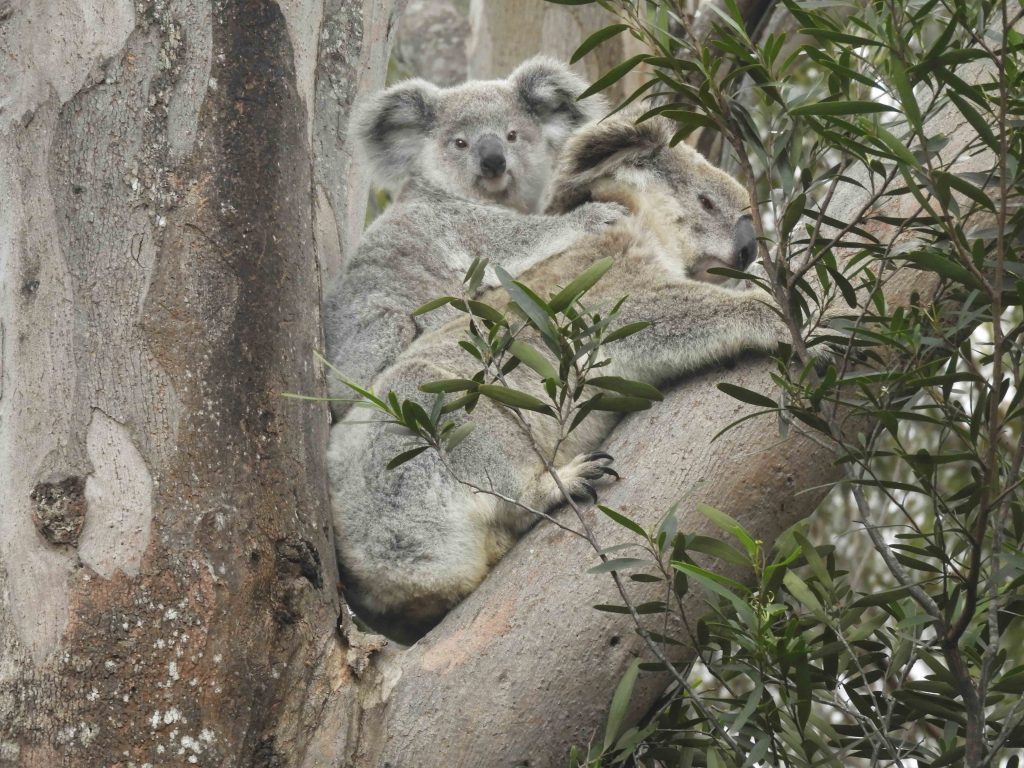
Jodie and Louis
The koalas in the Heathcote National Park area do have some advantages compared to their cousins outside the park. They are not at risk of their habitat being cleared for development or logging. Also, very importantly the population is chlamydia free.
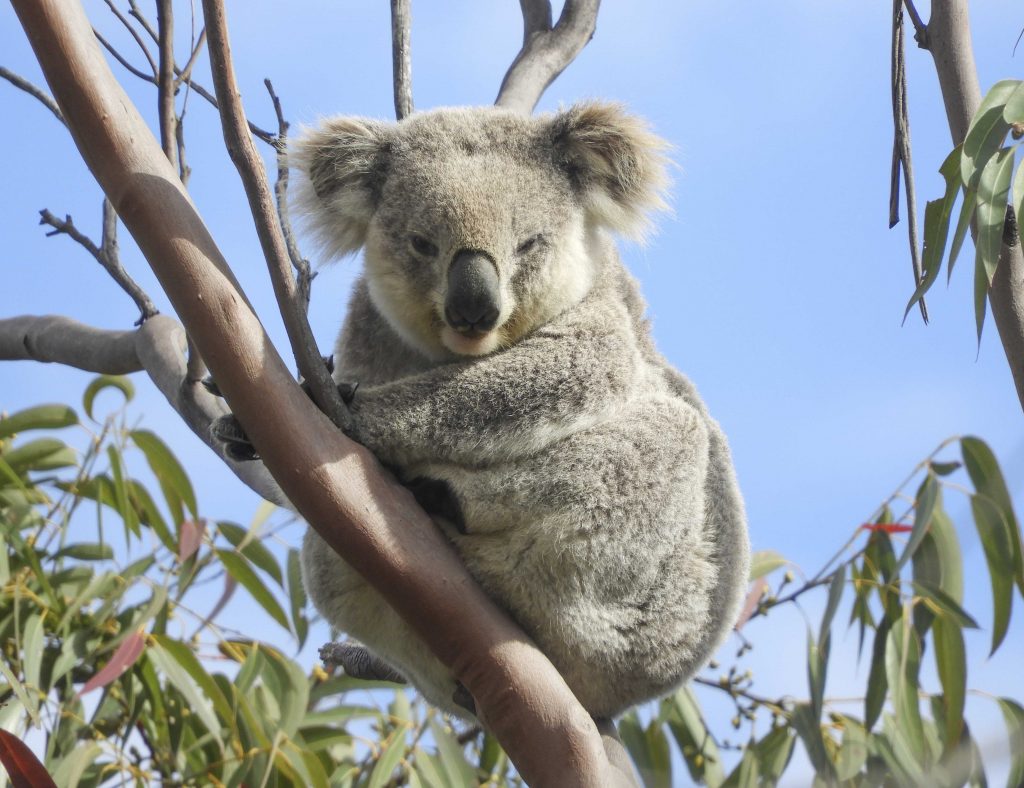
Zaphod
In December 2022 the NPWS started a volunteer program of koala feed tree planting (Eucalyptus punctata and E. sieberi) in the Heathcote National Park. Since then, over 1,000 trees have been planted in Heathcote National Park (including the Garrawarra Centre area). The work has been comprehensive with preparatory weeding and construction of a deer proof fence. There is on-going monitoring of the planted areas and new areas continue to be planted.

Spion Kop – Heathcote National Park
Another important initiative from NPWS that could provide benefit to koalas is fox baiting with 1080. Koalas are vulnerable when they are on the ground moving between trees. Fox baiting has occurred for the last two years in the Royal National Park but this initiative has not as yet been extended to Heathcote National Park.
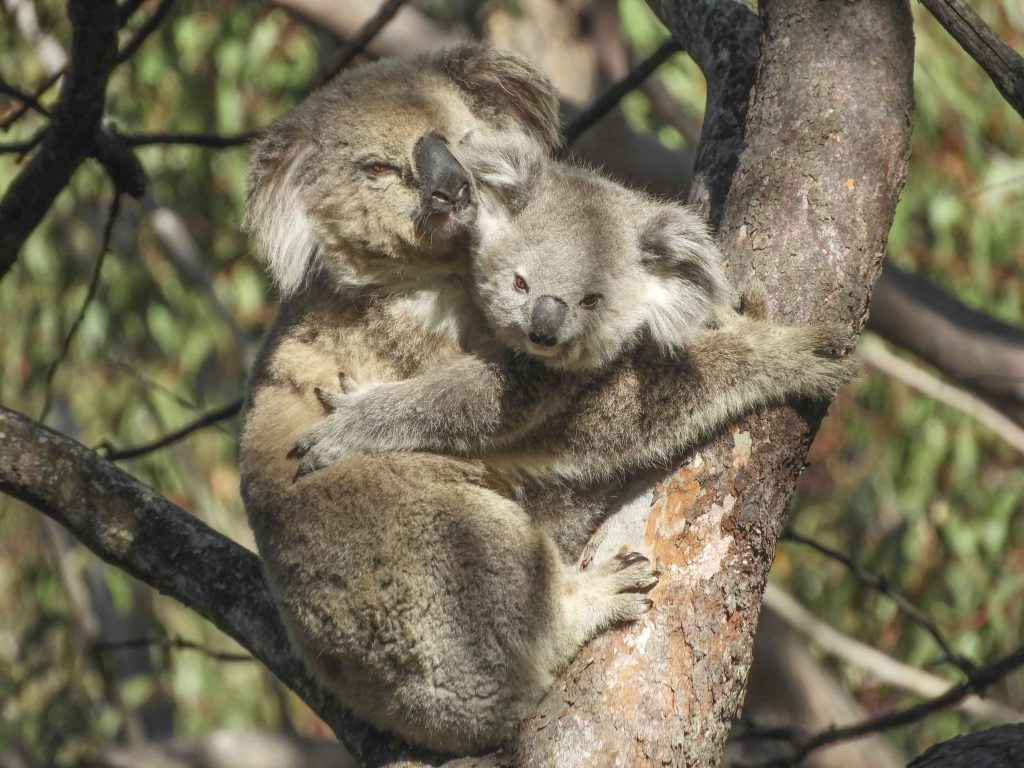
Patsy and Mel
The greatest threats to Heathcote’s koalas are fire, predation by foxes and traffic strikes when crossing Heathcote Road or the Princes Highway. Everything we can do to minimise these threats must be considered if we are going to maintain this important population against the background of their continued decline across the country.